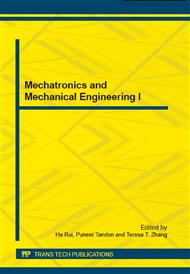p.128
p.138
p.143
p.148
p.153
p.158
p.163
p.170
p.175
Experimental and Numerical of Sloshing Effect on Heave and Pitch Motions of FLNG Vessel
Abstract:
Recently the demand of sloshing analysis is rising for building FLNG (Floating Liquefied Natural Gas) vessel. This study considers the experimental and numerical observations on strongly nonlinear sloshing flows in ship motion. The FLNG (Floating Liquefied Natural Gas) vessel was considered to be rigid body supported by non-permanent pole with distributed spring damper. Based on the general equation of the ship motion in waves, and various wave amplitude, various heading, wave period and critical fluid level on the cargo tank period governing equation induced by sloshing were derived. Several physical issues are introduced in the analysis of sloshing flows, and the corresponding numerical models are described. To study the sloshing effects on ship motion, a ship motion program based on impulsive response function (IRF) is coupled with the developed numerical models for sloshing analysis. The results show that the nonlinearity of sloshing-induced forces and moments plays a critical role in the coupling effects.
Info:
Periodical:
Pages:
153-157
Citation:
Online since:
October 2014
Authors:
Price:
Сopyright:
© 2014 Trans Tech Publications Ltd. All Rights Reserved
Share:
Citation:


